You can contact LEARNZ, part of CORE Education, at:
Postal Address:
PO Box 13 678,
Christchurch 8141,
New Zealand
Kia ora koutou
It was another fine morning in Russell/Kororāreka this morning. A fair sea breeze was a welcome sign, especially as the ambassadors and I would be on a sailing ship for the first part of the day. Today we would hear the story of what happened when Captain Cook and his crew sailed the Endeavour into Te Pēwhairangi 250 years ago.
Second web conference
For our second field trip web conference, our speaking school was Waikawa Bay. Our web conference expert was Kate Martin from Russell Museum/Te Whare Taonga o Kororāreka.
It was another enjoyable session. I always learn a lot on the web conferences. There are usually a range of questions that spark a deeper level of thinking, and this morning’s session was no exception. Remember you can access the recording if you missed the live web conference.
Sailing the R Tucker Thompson
To get into the headspace of being on board the Endeavour 250 years ago, we arranged for the R Tucker Thompson to take us to the same place that The Endeavour anchored in 1769. The “Tucker” is a traditional gaff-rigged schooner. It is also known as a tall ship. You can find out more about the Tucker on the website - https://tucker.co.nz/.
Also joining us today were some students from Te Kura o Waikare and Russell School. It didn’t take long for the ākonga to get into the swing of setting sails. With shouts of encouragement from the crew to the new “sailors” and rousing sea shanties, the sails were soon full, and we were gliding through the blue waters of the Bay with good speed.
You could hear the water rushing against the side of the ship, the sound of billowing canvas and creaking, rattling rigging. With the engine turned off, I felt somehow closer to the water and more at one with the elements.
Following in Cook’s footsteps
It didn’t take us long to reach Motuarohia. This is the island where Cook, along with a crew of scientists, botanists and Tupaia, a High Priest navigator from Polynesia, anchored. They anchored opposite a bay now known as Cooks Cove, although its original name is Otarepo.
The following interactions that took place here between these European arrivals and local Māori, is a fascinating tale. We were lucky to have Kate Martin on board with us to share part one of what is a four-part video series. In the videos Kate shares details of these interactions, which you can access on the field trip videos page.
In the videos you will see how there were some misunderstandings between these two diverse cultures at the time. A level of confusion and a lack of clear communication resulted in some skirmishes, but luckily for Cook and his crew, they had Tupaia to help settle the issues. The story made me think about the importance of gift giving, and the many ways people express their identity. It also made me question how well we are doing as a nation today in terms of working to understand each other and our many differences.
How deep is the water?
One of the key tasks on board the Endeavour was to continually find the depth of water, as well as work out what was on the sea floor. This was an important safety task when sailing into uncharted waters. Sailors used an instrument known as a lead line to measure depth. They would throw a weighted rope over the side and observe marks on the rope. The mark on the rope that was on or near the surface of the sea when the lead reached the bottom showed the depth of water. The students seemed to enjoy having a go at this task. It made me appreciate the electronic sounder I have on my boat that automatically tells me water depth, as well as the shape of the sea floor.
At the museum
It was soon time to sail back to Russell wharf. After some lunch we made our way to the Russell Museum/Te Whare Taonga o Kororāreka. It was here that Kate continued her story telling about the first interactions between Māori and Europeans here in Te Pēwhairangi.
Before today, I had never heard the story. I found the whole tale fascinating and I hope more people get to learn about it. If you are ever in Russell/Kororāreka I encourage you to visit the museum. They have an interactive map on display that tells the story with overlaid images and a narration. You will see some of this story map in the videos.
There are many historical events in Aotearoa which play an important part in understanding who we are as a nation today. I encourage you to learn about similar history near your place and consider how the events have shaped and influenced the people and the place you now call home.
Mā te wā and catch you tomorrow,
Andrew
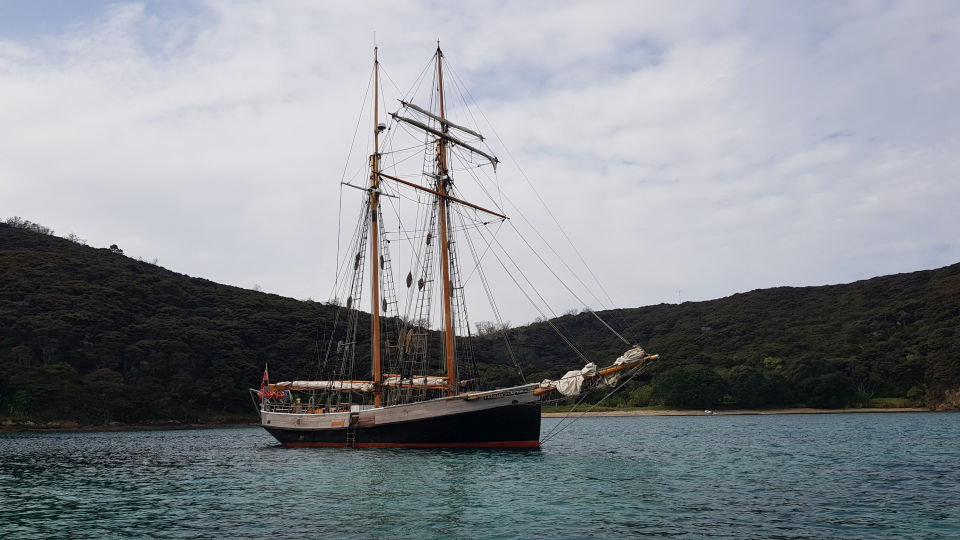
Today we went sailing on the R Tucker Thompson to where Cook and his crew on board the Endeavour anchored in 1769 in the Bay of Islands. Image: Andrew Penny, LEARNZ.
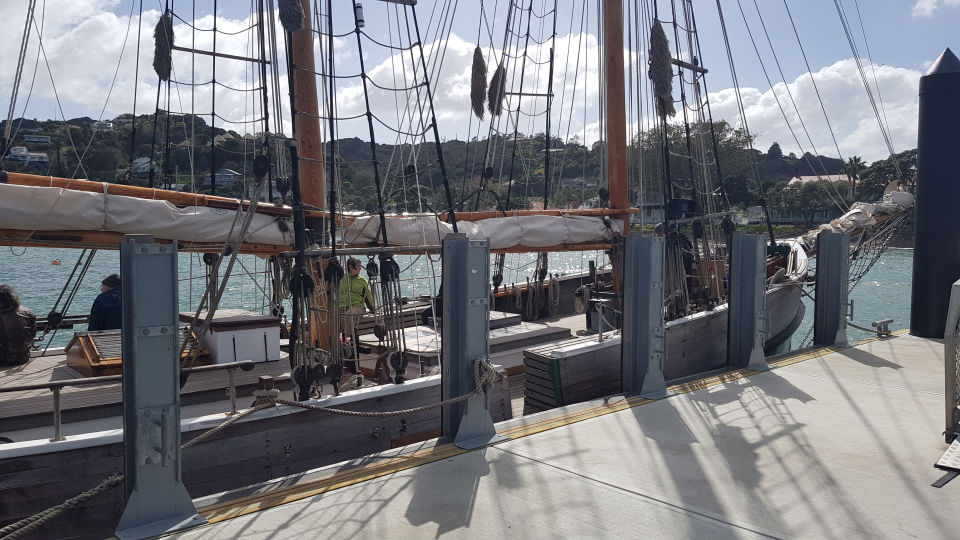
About to board the R Tucker Thompson at Russell wharf. Image: Andrew Penny, LEARNZ.
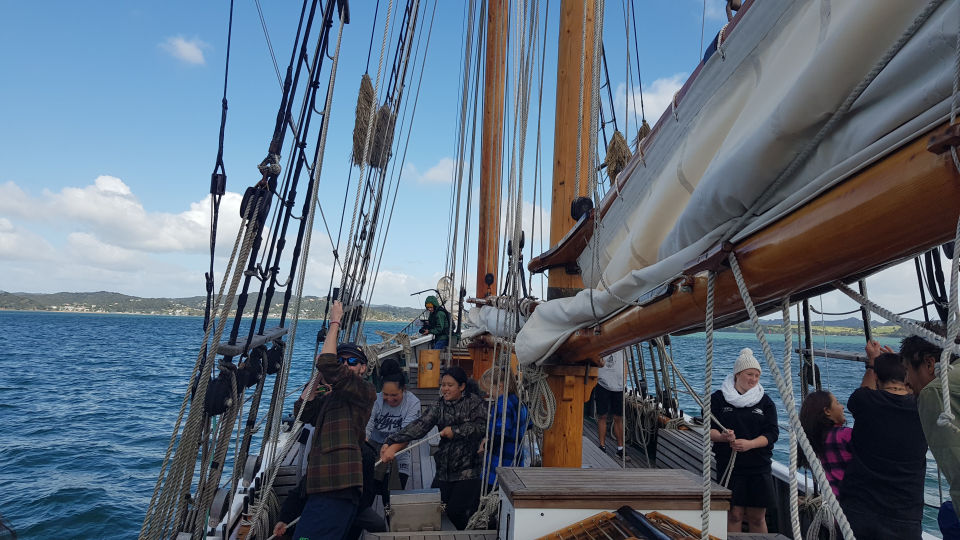
Students from Te Kura o Waikare and Russell School help set the sails on board the Tucker. Image: Andrew Penny, LEARNZ.
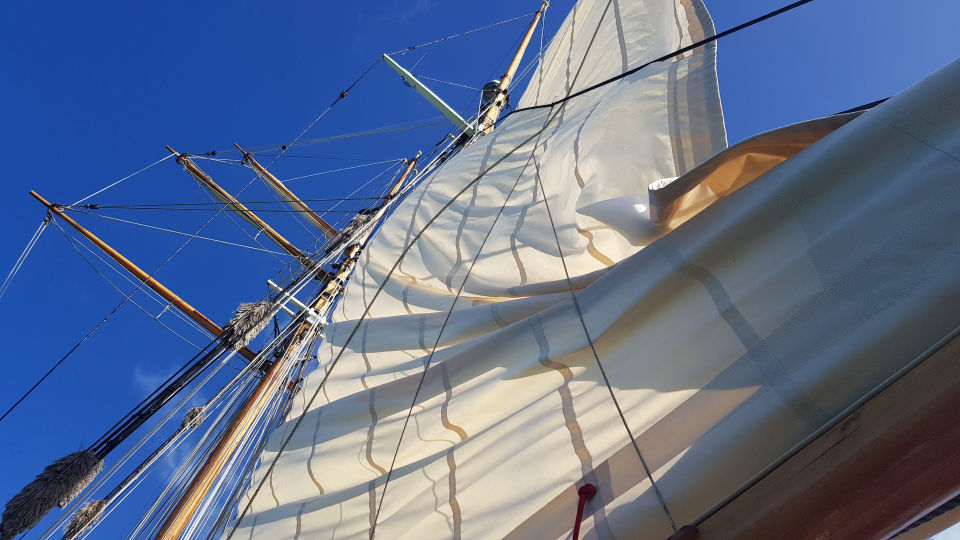
Up go the sails. What are the advantages of a sailing ship as opposed to one that uses a motor? Image: Andrew Penny, LEARNZ.
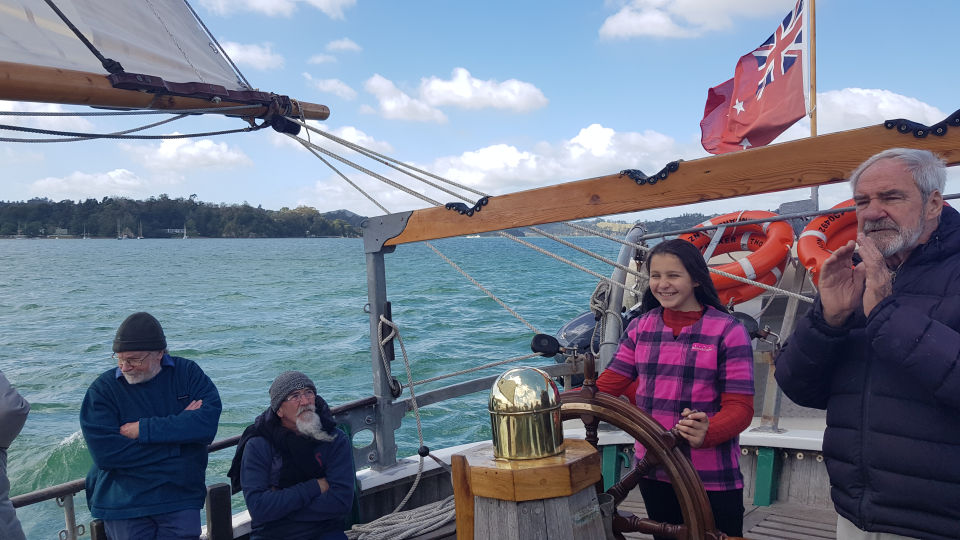
Some students had a go at steering the ship. What challenges do you think Captain Cook and his crew faced when sailing around Aotearoa? What do you notice about the flag at the back of the ship? Image: Andrew Penny, LEARNZ.
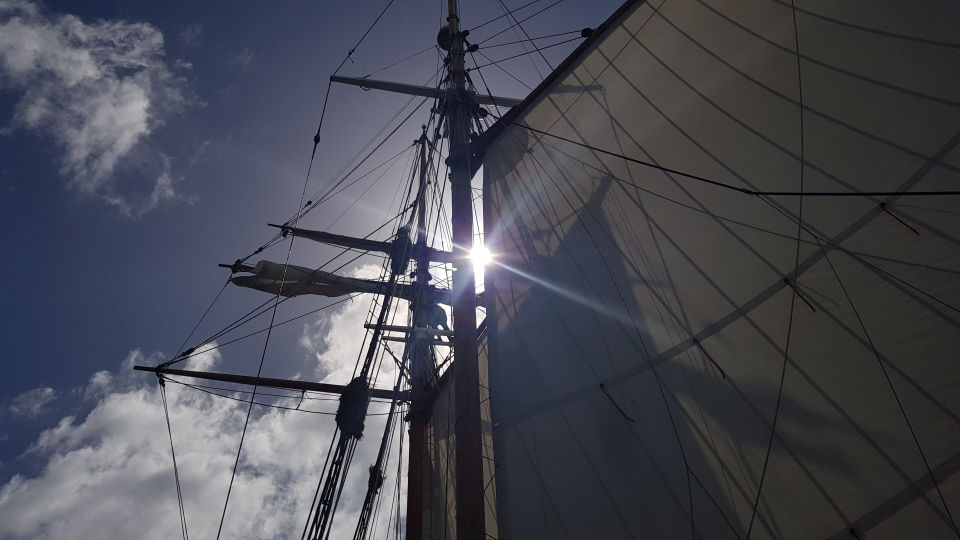
"With shouts of encouragement from the crew to the new “sailors” and rousing sea shanties, the sails were soon full, and we were gliding through the blue waters of the Bay with good speed." Image: Andrew Penny, LEARNZ.
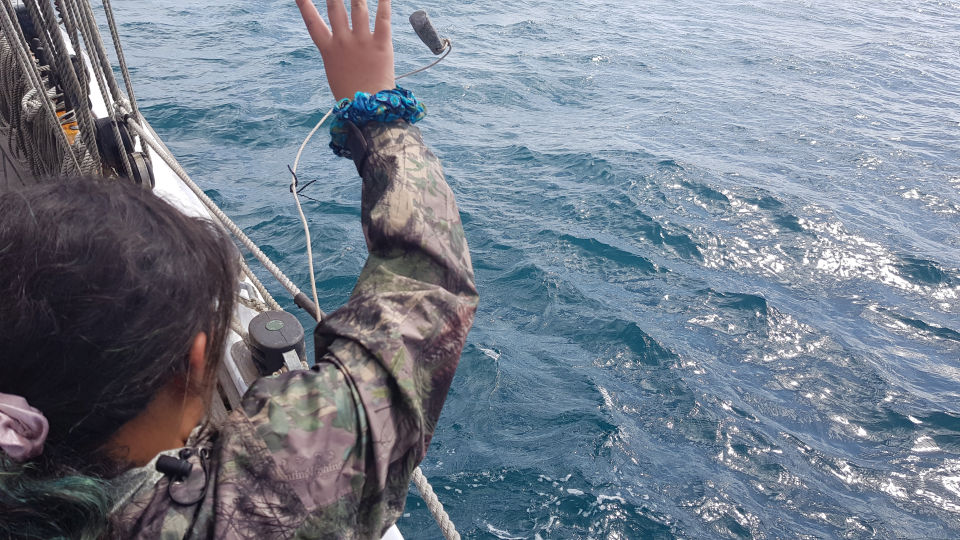
One of the student sailors throws the lead line. What is the lead line used for? Why was it so important? Image: Andrew Penny, LEARNZ.
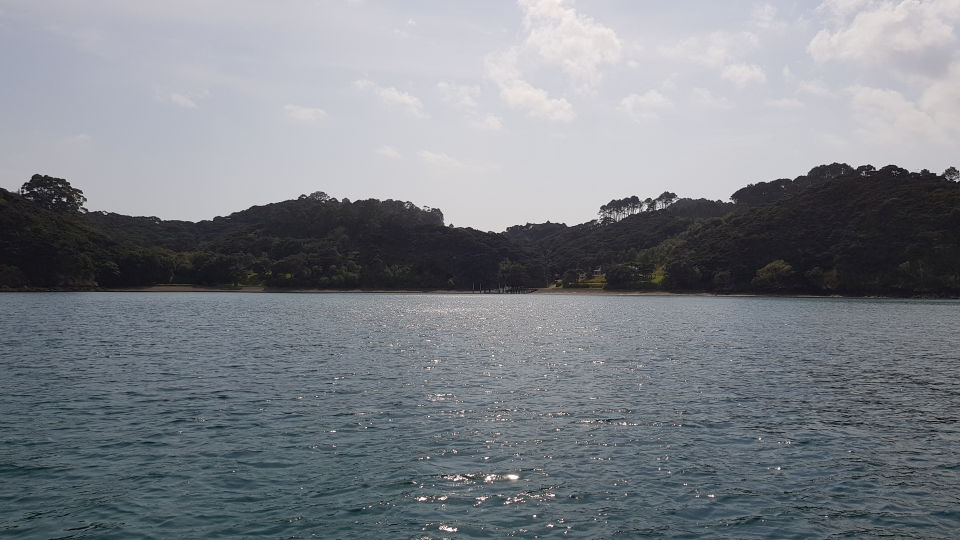
Otarepo, also known as Cooks Cove. This is where James Cook and some of the crew went ashore in 1769. A large group of Māori performed a haka. How do you think the Endeavour crew reacted to this? Image: Andrew Penny, LEARNZ.
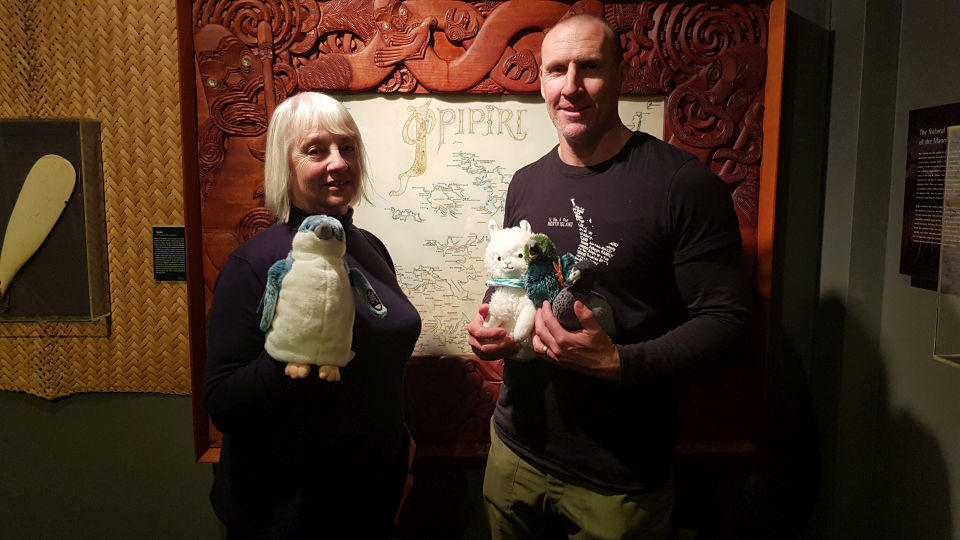
Andrew and the ambassadors with Kate Martin at Russell Museum/Te Whare Taonga o Kororāreka. Image: Shelley Hersey, LEARNZ.
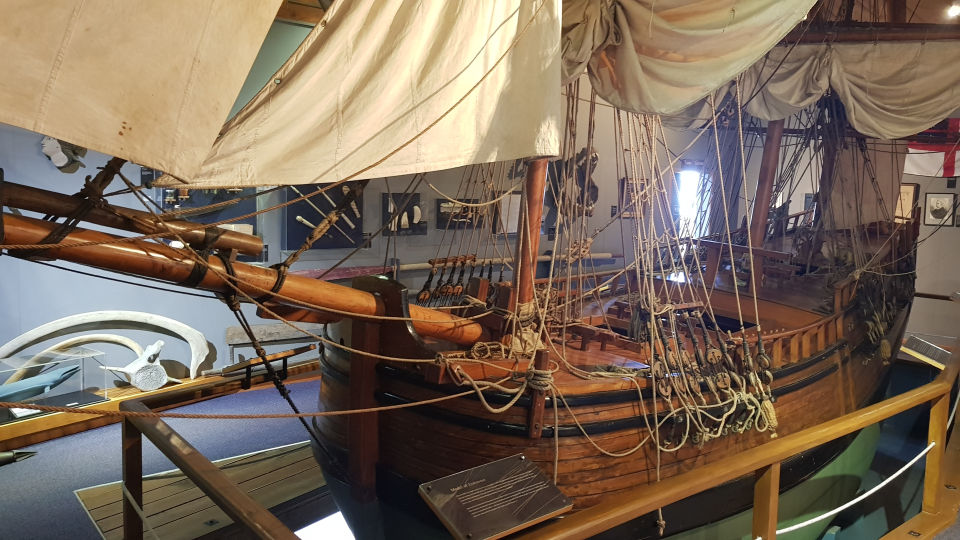
There is a one fifth scale replica of the Endeavour inside Russell Museum. How is a ship like the Endeavour different from a waka hourua which early Polynesian explorers used to reach Aotearoa?
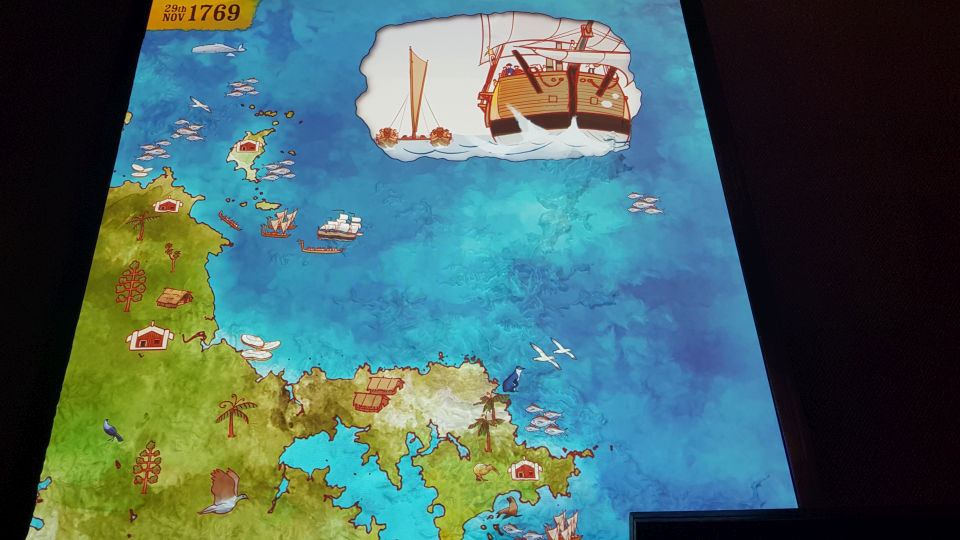
The interactive map at Russell Museum tells the story of first contact between Māori and Europeans in the Bay of Islands in 1769. Image: Andrew Penny, LEARNZ.